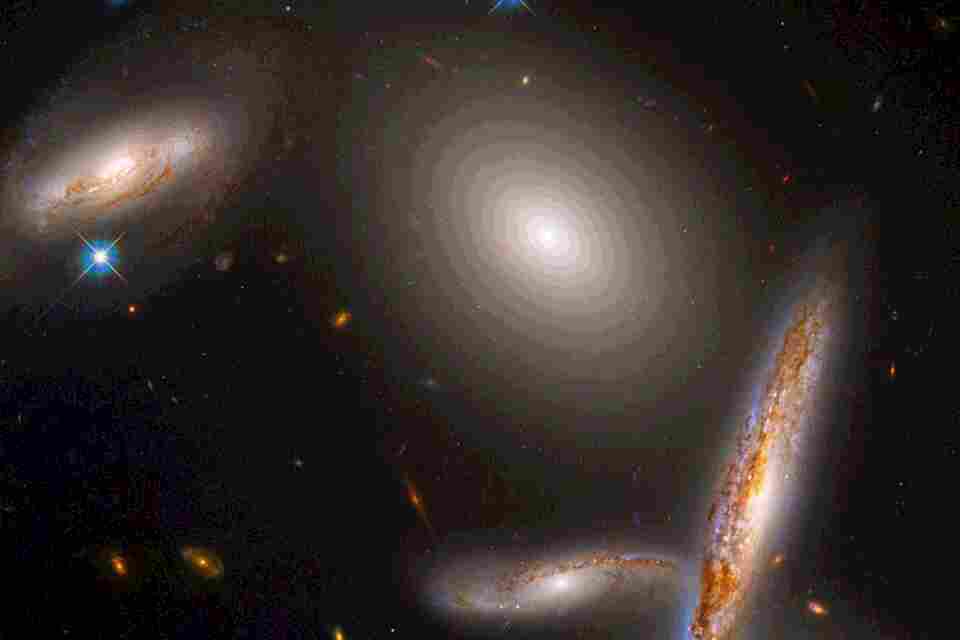Technology
Nasa reveals stunning Hubble photo of ‘unusual’ galaxies with a BIG secret – can you spot it?

NASA has revealed a stunning image showcasing five unusual galaxies – and they host a huge secret.
On Thursday, the US space agency shared a new photo to honor the Hubble Space Telescope’s 32nd anniversary.
Nasa has revealed a stunning image showcasing five unusual galaxies that are due to collide in a billion years
In the image, a cluster of five galaxies – three spiral, one elliptical, and one lenticular – can be seen.
The collection of galaxies is known collectively as the Hickson Compact Group 40.
Located about 300 million light-years away from Earth, the galaxies are unusually close together.
“Somehow, these different galaxies crossed paths in their evolution to create an exceptionally crowded and eclectic galaxy sampler,” Nasa writes on its Hubblesite.
Read more Nasa’s Hubble Space Telescope
“Caught in a leisurely gravitational dance, the whole group is so crowded that it could fit within a region of space that is less than twice the diameter of our Milky Way’s stellar disk.”
What’s more, in around another billion years, the five galaxies will all merge together to form one giant elliptical galaxy.
“This snapshot catches the galaxies at a very special moment in their lifetimes,” the space agency said.
While galaxy groupings are not uncommon, they’re normally found in the heart of the larger clusters.
Most read in Tech
However, these galaxies are “notably isolated in their own small patch of the universe,” towards the direction of the constellation Hydra, the space agency explained.
One potential reason for this abnormal occurrence is the high amount of dark matter present in the area.
“If they come close together, then the dark matter can form a big cloud within which the galaxies are orbiting,” Nasa said.
“As the galaxies plow through the dark matter, they feel a resistive force due to its gravitational effects. This slows their motion and makes the galaxies lose energy, so they fall together.”
Astronomers have observed the Hickson Compact Group 40 not only in visible light, but in radio, infrared, and X-ray wavelengths.
Their findings indicate that all five galaxies possess a compact radio source in the core, meaning they may each host a supermassive black hole.
Future research on this galaxy group may help scientists figure out “when and where galaxies assembled themselves, and what they are assembled from”, Nasa said.
Happy birthday, Hubble!
First conceived in the 1940s, the Hubble Space Telescope (or just Hubble for short) was launched by the US space agency on April 24, 1990.
It is one of Nasa’s four great observatories, along with the Compton Gamma Ray Observatory, the Chandra X-ray Observatory, and the Spitzer Space Telescope.
Read More on The US Sun
Numerous scientific observations that have furthered man’s understanding of the universe are can be credited to Hubble.
And while the telescope’s list of achievements is long, some of its most notable feats include helping astronomers determine the age of the universe and observing the rate at which it is expanding.
We pay for your stories!
Do you have a story for The US Sun team?
Email us at exclusive@the-sun.com or call 212 416 4552.
Like us on Facebook at www.facebook.com/TheSunUS and follow us from our main Twitter account at @TheSunUS

